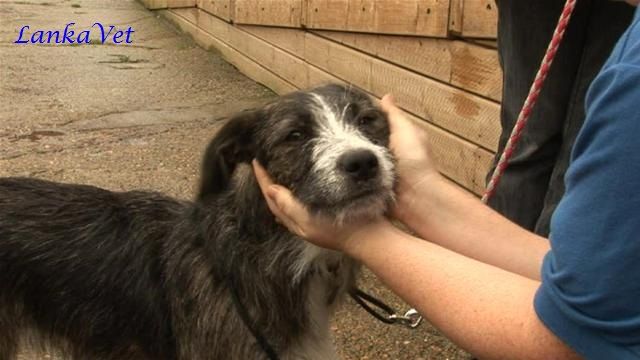
Making contact with a dog you have never met can be a dangerous proposition. Always remember that he is possibly frightened by your attention, and if your friendly overtures are mistaken for threats, the dog may become violent.
How to tell a friendly dog from
a potentially unfriendly one?

- Get the dog’s attention: Make a soft noise with your tongue, or talk to him quietly. Whatever you do, don’t startle him.
- Approach the dog VERY slowly. Try to appear as small as possible by moving in a half-crouch, coming down toward the dog’s level, but remember to stay attentive to his posture and attitude. Do NOT get down on your hands and knees, since that would make it harder for you to get away if the dog decided to attack. Stop when you get within 10-15 feet of him.
- Be patient. Allow the dog to come the rest of the way to meet you. Call to him in a soothing voice. He’ll either take you up on your offer or he won’t. Be respectful of his choice, and do not move any closer to him. You may wish to toss him a bit of food at this point, if you have some. Slowly and gently, toss the morsel underhand to one side of him. Never throw the food directly at the dog.
If he does come, the rest of
the way to meet you:
- Be careful not to make “threatening gestures”: Never stares the dog directly in the eye. Dogs interpret this as a sign of aggression, and may think you’re looking for a fight. Instead, look off to one side of the dog. Stretch out your hand toward him so that the back of your hand is facing him. This is less threatening than an open hand, and also lessens the chances that your fingers could be bitten.
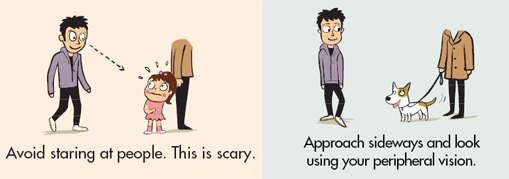
- Remain motionless as the dog sniffs at your hand. Let him take as long as he needs to accomplish this task – it’s very important to him! Let him finish his examination of your hand, then SLOWLY move the same hand to just behind one of his ears, and scratch or pet gently. Watch constantly for his reaction, and don’t insist if your movement makes him nervous. If he does not like having you move your hand where he can’t see it, pat the side of his neck or his chest instead.
If he declines your invitation
and decides not to approach you
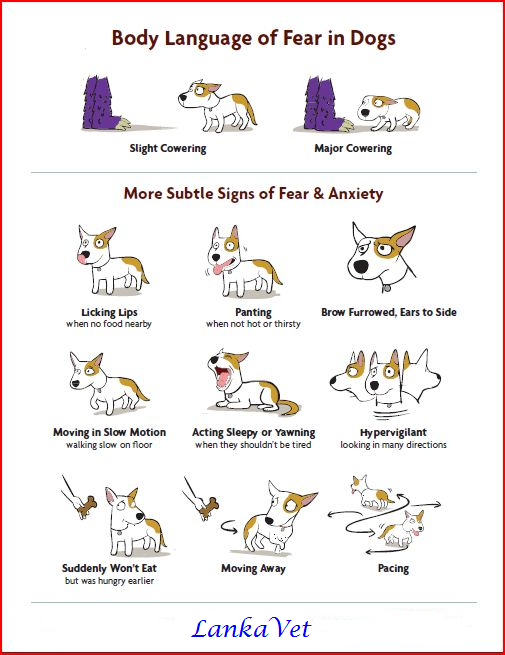 Watch his body language very
carefully. Dogs always give plenty of warning before they attack. If a dog is
showing signs of fear or unease leave him alone immediately. Your attention is not welcome.
But if he seems neutral or curious and is exhibiting none of the warning signs
mentioned below, you may slowly - VERY slowly - start to take a few SMALL steps
in his direction if you think he’s undecided but just shy. Stay alert as you do
so. Calmly and slowly stop and back away if he starts to snarl, bare his teeth
or exhibit any threatening signs at all. Do NOT run away. Remaining calm is
always your best defense.
Watch his body language very
carefully. Dogs always give plenty of warning before they attack. If a dog is
showing signs of fear or unease leave him alone immediately. Your attention is not welcome.
But if he seems neutral or curious and is exhibiting none of the warning signs
mentioned below, you may slowly - VERY slowly - start to take a few SMALL steps
in his direction if you think he’s undecided but just shy. Stay alert as you do
so. Calmly and slowly stop and back away if he starts to snarl, bare his teeth
or exhibit any threatening signs at all. Do NOT run away. Remaining calm is
always your best defense.
Some of the common fear or
attack signals you should watch out
- Shrill barking
- Teeth bared, with or without growling
- Hackles rose
- Staring directly in your eye
- Crouching with muscles tensed and with tail held rigid, possibly between the legs
- Standing with muscles tensed and with tail held rigid at ‘half-mast’
- Ears flattened
- Coming directly toward you with head lowered
- Attempting to circle and get behind you
What to do if a strange dog
approaches you
- Stop. Stand still and do not move your hands or body.
- Speak softly to him.
- Wait to see what the dog’s attitude is. If he’s friendly, crouch down and react carefully as described earlier, always watching to make sure his attitude remains friendly and non-threatening. If he seems agitated in any way, remain calm and do nothing to approach him or interact with him.
- If he tries to circle and get behind you, pivot slowly, so that you are always facing him. Do not move your arms or legs as you pivot.
- Never turn your back on a dog that is moving toward you. Do NOT panic and run. Wait until he stops moving before you move, and then move slowly, backing away from him. Stop when he moves again.
- Never strike or kick or make any threatening physical moves toward any dog, whether a strange dog or one you already know.
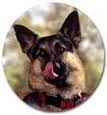
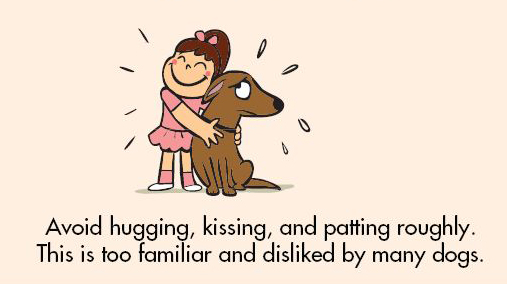
No comments:
Post a Comment